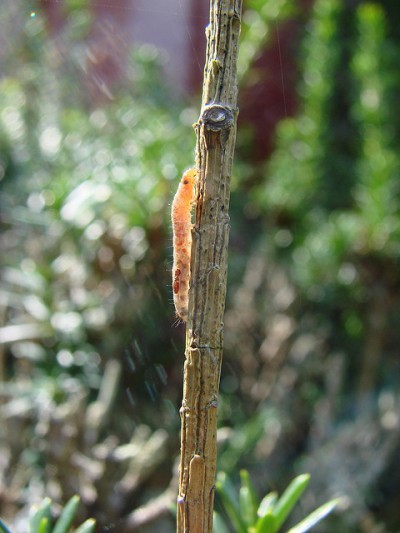






Webworm lawn damage is most significant in cool season turf grass. These tiny pests are the larvae of an unassuming small brown moth. The larval feeding causes dead brown patches in lawns, which may have difficulty recovering. Sod webworm control is focused on the larva and not the adult moths. Learn how to get rid of sod webworms for a healthier and greener lawn.
The first signs of sod webworm feeding are found in spring. The chewing activity of the worms removes the tender top growth of the grass and leaves behind thin patches of shorter grass. As they grow, the webworms cause larger areas of brown sod. These are usually in sunny locations and dry spots, such as curb edges and along driveways.
The worst evidence is seen in late July and August and may be mistaken for drought stressed grass that has entered summer dormancy. You can determine it is webworm lawn damage by digging into the thatch and finding the silk lined tunnels. Alternately, mix two tablespoons of liquid dish soap with two gallons of water and soak an area of the lawn. Within minutes the tan spotted worms come to the surface and you will know the cause of the lawn damage.
Webworm moths lay eggs in spring. Females can lay 60 eggs per night and eggs hatch in just a week. The complete cycle from larvae to adult takes six to ten weeks and the insects may produce several generations per season. The latest generation overwinters in tunnels in the soil. Growing larva house themselves in silk lined tunnels in thatch, where they feed on the nearby green blades.
Sod webworm control must focus on the larva, not the adult moths. There are several species of sod webworms, some of which only have one generation in mid to late summer and do not cause much damage. The variety that has first generation larva in early spring cause the most problems in turf grass as they are only the first wave of feeding worms. By the time the second generation arrives, grass is already stressed and subsequent feedings cause more obvious distress to the lawn.
There are several ways to improve the quality of your lawn after discovering sod webworms. First, water and fertilize regularly to enhance the health of the grass and encourage it to recover.
Second, do not use broad spectrum insecticides on the lawn which can kill beneficial predators. You may also spray the lawn with Bacillus thuringiensis during the early larva appearance. However, it seems to have little control on older larva, so knowing the sod webworm lifecycle is key to achieving control.
Thirdly, use a pesticide labeled for effectiveness against the pests. The larva feed mostly at night. Therefore, controlling sod webworms with chemicals successfully means spraying in late afternoon to ensure ingestion of the poison.
If you live in an area where these pests are common, you may want to use a turfgrass that is resistant to the worms. Any grass that is “endophyte enhanced” such as some tall fescues, perennial ryegrass and fine fescues has been engineered to be resistant to the pests.
damage to lawn and flowers from rock salt
Creeping Charlie and organic weed control
Lawn care and crab grass control
Learn About Plant Rust Disease And Rust Treatment
What Is Cool Grass: Learn About Cool Season Turf Grasses And Ornamentals
Learn About Cyclamen Seed Propagation And Division
Nematodes As Pest Control: Learn About Beneficial Entomopathogenic Nematodes
Copyright © www.100flowers.win Botanic Garden All Rights Reserved